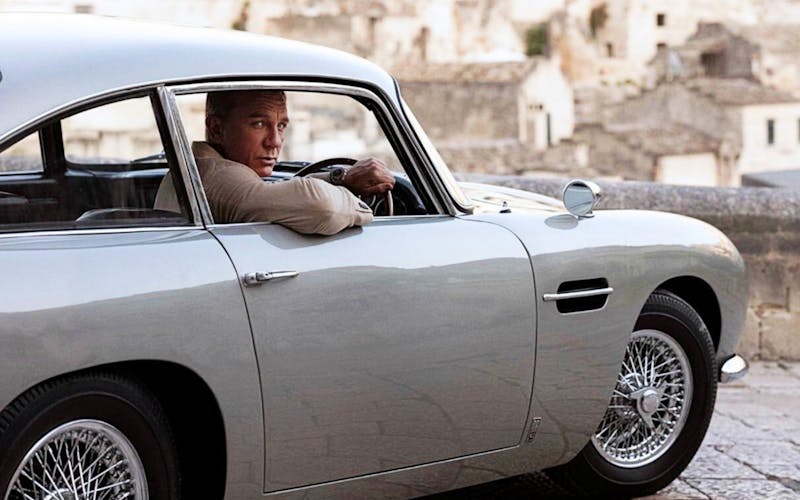
In March 2022, the men’s suit was removed from the Office for National Statistics’ (ONS) ‘basket of goods’, a selection of more than 700 representative goods and services used since 1947 to assess the UK’s cost of living. Of course, this factoid ricocheted around seemingly every morning editorial meeting in the country, leading to a slew of articles in all major newspapers and magazines about the impending implosion of two-piece tailoring, killed off by a pandemic that irrevocably changed the way we all work and thus fundamentally changed what we needed to wear to do so. Already edging its way towards extinction thanks to office dress codes that had been relaxing since the importation of Casual Fridays from America in the Nineties, the humble suit was getting its final nudge into sartorial annihilation thanks to remote working – and younger men were to blame.
Or so the yarn was spun in copy.
However, that was only half the story. High-street heavyweights might have been pulling business suits from both virtual and physical shelves thanks to dwindling sales, but tailoring was having something of a revival when it came to time off-the-clock. On the men’s catwalks and on celebrities, non-traditional suiting (whether through form or fabrication) was being embraced in a new way by the sartorially minded of all genders for going out-out,
What was more surprising is that this movement was being led by a number of luxury menswear labels here in the UK that we tend to think of as “heritage” – long-standing, storied makers known for their intrinsic values of quality and craftsmanship. And it wasn’t just true when it came to suiting. From headgear to shoes to accessories, British luxury brands showed that age was not a barrier to reinventing themselves to connect with a younger, fashion-focused customer. In fact, it was an advantage.
“Alfred Dunhill himself was about change, innovation and experimentation,” says Mark Weston, Creative Director of dunhill. “More than anything else, he was always looking ahead. This drives me to create forward-thinking products that are relevant and useful for today, always with a subtle and respectful nod to the past.”
Nowhere can this philosophy be seen better in the look he crafted for British actor Damson Idris at this year’s Met Gala in New York City (otherwise known as the most high-profile event in the global fashion calendar). Inspired by the white tie ensemble legendary actor Sidney Poitier wore to accept his Oscar for Best Actor in 1964, Weston designed a suit for Idris (pictured below) that had all the sleek hallmarks of ultra-traditional formal dress, but remixed in a way that felt exciting and relevant for a younger actor wanting to stand out from the crowd.
“Different elements were incorporated to pay tribute to Poitier. The black evening jacket was crafted in a classic British-milled barathea and cut in a house wrap style, combining a structured silhouette with a silk ottoman peak lapel and signature gold button detailing. A tailored wrap waistcoat featured a silk satin lapel and bonded seams, while underpinnings including a white cotton sateen point-collar shirt and a cotton silk rollneck alluded to the legendary actor’s white tie dress,” says Weston of the design (he is pictured with Idris above).
“The precision and expertise of tailoring is synonymous with dunhill, but it’s how these are represented and recontextualised for now that is the key to success. The wrap jacket and split hem silhouette is a new expression, but it’s the evolution of the materials, engineering and how these elements give purpose to the wearer that is important to me, however someone identifies themselves.”
Re-interpreting brand DNA has also been high on the agenda at historic shoemaker Church’s. In a curveball release that took many by surprise, the nearly 150-year-old Northampton label dropped a collaboration in March 2022 with American streetwear label Off- White – one of the last projects worked on by the late designer Virgil Abloh before his passing in November 2021. Entitled “Off-White c/o Church’s”, the collection featured a riff on the cobbler’s Burwood brogue Oxford (originally introduced in 1953), with black brushed calfskin replacing the shoe’s usual brown suede upper, and “Special Events” (screen-printed in Off-White’s signature script) adorning the outside of the shoe, not to mention a trademark Off-White hangtag.
“The new Burwood is a bold reinterpretation of Church’s quintessential sophistication and heritage, recoded through Off-White’s spirit of rebellious realism,” says Denni Manzatto, Chief Executive Officer of Church’s. “The launch begins a new chapter of our brand’s journey, pointing to the exploration of the new formal codes.”
What continues to resonate with younger customers are the values that luxury brands, especially here in Britain, hold dear: quality, craftsmanship and an understandable justification of what makes something worth its price tag. While the items offered by brands might change, these values allow luxury brands to reinvent their pieces to appeal to contemporary tastes. Take Lock & Co., a hatmaker founded in London in 1676. Famed for its bowlers and top hats over the centuries, 2022 saw the company introduce a new range of bang-on-trend bucket, beanie and baseball caps for a younger, more casual clientele. The result? Men’s baseball cap sales are up by 115 per cent year on year, men’s bucket hats are up by 11 per cent and, according to data from the site, customers aged 18 to 24 now account for 15 per cent of the brand’s total online traffic, up from 8 per cent in 2019.
“No matter the customer, what everyone has come to expect from Lock & Co. is the best: the best designs, the best fabrics, the best service,” says Ysabel De Ornelas, Buying Manager at Lock & Co. “These principles of excellence were established at the beginning by our founder James Lock and continue to be upheld by the seventh generation of the family, who still run the business from the shop at 6 St James’s Street in London today.”
“I think it’s clear that our younger customers, both men and women, highly value our provenance and Britishness as a brand. However, the world of retail is continually changing and even the most established brands can’t stand still,” echoes Roger Stephenson, Deputy Chairman of Lock & Co. “As a heritage brand with over 346 years of history, we must blend innovation with tradition, and it is this ability to continually evolve that has kept us in business for so long.”
In short, the whims of fashion may change the attitude to certain items over time – even ones as seemingly long-standing as the suit – but if luxury brands continue to elevate and adapt to suit the changing needs of new wave customers, they will be relevant for many years to come.





